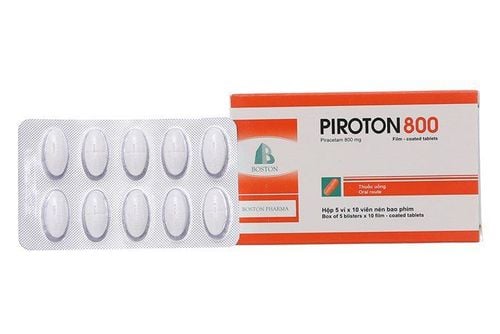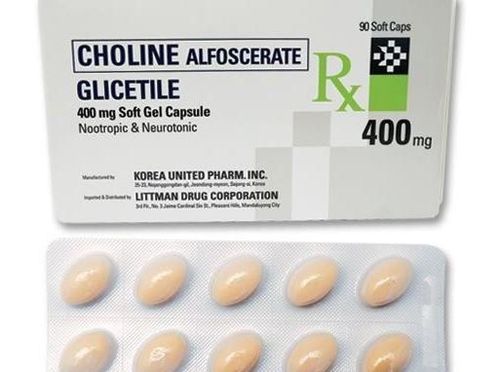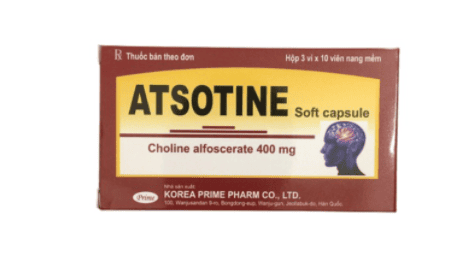This is an automatically translated article.
Posted by Master, Doctor Nguyen Ngoc Quang - Head of Department of Cardiovascular - Thoracic Surgery - General Surgery
Traumatic brain injury (CTE), especially severe traumatic brain injury is a major cause of death in Vietnam as well as in the world. The resuscitation treatment of severe TBI requires the coordination of many specialties, the most important of which are experienced resuscitators, neurologists, and neurosurgeons. Resuscitation is based on the principle of minimizing secondary injury, maintaining cerebral perfusion pressure (CPP) and optimizing cerebral oxygenation.
1. What causes severe traumatic brain injury?
Traumatic brain injuries are mostly the consequences of accidents: traffic, labor, daily life... with the mechanism of causing a large impact force on the skull, causing fracture of the skull bones, internal bleeding. brain, epidural, subdural hematoma and brain parenchymal contusion.... In addition to the direct consequences to the brain structure mentioned above, after trauma, the cellular consequences are even more serious: Inciting the inflammatory response process causes brain cell edema, cerebral vasospasm causing cerebral ischemia, releasing brain cytotoxic substances and changing the permeability of brain vessels and brain cells. All of these processes result in a potentially life-threatening consequence of increased intracranial pressure (TALNS).
In addition to surgical interventions to help repair brain structural lesions, resuscitation therapy is considered extremely important to avoid secondary stage 2 injuries after trauma, which plays a decisive role in preserve the patient's brain function and movement in the future.
2. Typical CT images of traumatic brain injuries

Hình ảnh cắt lớp điển hình của các thể chấn thương sọ não
Image A: Diffuse cerebral edema: 32-year-old male patient, high-speed traffic accident. On CT scan may look very normal, however there is diffuse cerebral edema, complete compression of the ventricles often accompanied by very severe increase in intracranial pressure requiring very intensive resuscitation treatment to preserve. brain cells.
Picture B: Subdural hematoma: A 39-year-old male patient, after falling down the stairs, a large hematoma in the left hemisphere of the brain caused pressure on the brain structure, midline deviation and collapse of the ventricles, case This requires surgery to remove hematoma and control intracranial pressure to avoid postoperative cerebral edema.
Image C: Epidural hematoma: 60-year-old male after a fall. Characteristic lenticular hematoma. However, the hematoma is located opposite the direct impact side (swollen scalp). With this type of injury, not only surgical removal of the hematoma is required, but the appearance of a hematoma on the contralateral side reflects a very strong impact, often accompanied by diffuse cerebral edema requiring management of the increased intracranial pressure. post-operative pole.
3. Controlling intracranial pressure, a key goal in traumatic brain injury resuscitation
Increased intracranial pressure causes many serious consequences at the cellular level and progresses in a pathological spiral, because when ICP increases, it interferes with the blood flow to the brain cells (CPP), causing ischemia. cells and brain edema increased.
CPP = MAP – ICP CPP: cerebral perfusion pressure MAP: mean arterial pressure ICP: intracranial pressure => The goal is to reduce ICP to help maintain CPP within acceptable limits.

Tăng áp lực nội sọ gây nhiều hậu quả nghiêm trọng ở mức độ tế bào

Hệ thống theo dõi áp lực nội sọ(ICP) có thể được tiến hành thuần thục và thường quy tại Vinmec Times CIty
4. CPR measures and ICP control
Mannitol infusion therapy has a particular role to play in the case of acute elevation of ICP because of its rapid and effective action. Mannitol acts to increase serum osmolality > 320 mOsm/L, causing the effect of water absorption in the interstitial space around brain cells into the vessel lumen, reducing cerebral edema.
Hypertonic saline infusion Therapy Hypertonic saline is increasingly used as effective as Mannitol. It reduces cerebral edema by moving water away from brain cells, reducing tissue pressure and reducing cell size leading to a decrease in ICP.
Ventricular drainage Ventricular drainage is often applied if there is acute obstructive ventricular dilatation, which is a common complication of thalamic hemorrhage compressing the third ventricle and compressing cerebellar hemorrhage. into the fourth ventricle.
Ventricular drainage with the role of draining fluid in the ventricular cavity, thereby creating the effect of reducing brain volume, both monitoring and treating increased intracranial pressure and treating ventricular dilatation.

Phương pháp dẫn lưu não thất áp dụng tại Vinmec Times City
Command hypothermia Patients with traumatic brain injury often have fever that cannot be controlled by medication due to different causes, accompanied by fever, increased inflammatory response, increased cellular metabolism, and consequently, cell death. cerebral edema. Many studies have shown that high brain temperature with fever will reduce the ability of brain cells to regenerate and cause increased intracranial pressure. Since 1990, there has been ample evidence that hypothermia to 33°C can significantly improve post-traumatic neurological function. At Vinmec Times City International Hospital, doctors apply hypothermia with two main purposes: If the patient's fever cannot be controlled with medication, the aim is to bring the body temperature back to normal. The second purpose is indicated in cases of raised intracranial pressure that cannot be controlled by conventional medical measures.

Liệu pháp hạ thân nhiệt được các bác sĩ hồi sức thực hiện trên bệnh nhân chấn thương sọ não nặng
Surgical intervention For traumatic brain injuries with subdural, epidural or large hematoma in the brain causing a large displacement and pressure effect, surgery is mandatory before effective brain resuscitation. fruit. Otherwise, surgery is also indicated if the increase in ICP cannot be controlled by medical methods. It is decompressive craniotomy, with the reason being to partially open the skull so that the brain volume can be partially drained out during the period of severe cerebral edema, avoiding malignant increase in intracranial pressure. This is a fairly safe and effective measure.

Phương pháp mở sọ giảm áp được áp dụng tại Vinmec Times City
Other supportive resuscitation measures With the goal of limiting the strong inflammatory reaction at the level of brain cells after injury, and at the same time limiting brain edema and increased intracranial pressure, resuscitation doctors At the same time, the following measures will be applied simultaneously to ensure an intensive traumatic brain injury resuscitation process:
Maintain sedation to a level that ensures the patient lies still, completely still to avoid outside influences to the nervous system Prophylactic antiepileptic drugs and EEG monitoring to ensure that the patient does not have a seizure, a common complication of traumatic brain injury Hyperventilation therapy to maintain PaO2 > 83 mmHg and PaCO2 in the range: 34 - 38 mmHg, this has been proven to effectively reduce cerebral edema in patients Hemodynamic assurance: The aim is to keep enough blood pressure for the patient to ensure perfusion pressure brain according to the formula CPP = MAP-ICP, if ICP is elevated, it is necessary to keep blood pressure at a high level to ensure CPP, intravenous fluid therapy or vasopressors can be used. ch if needed.

Máy theo dõi ICP(3 mmHg), CPP(83 mmHg) và MAP(87mmHg) được lắp tại Vinmec Times City
Nutritional support Blood sugar control Ulcer prevention Prevention of deep vein occlusion Along with the development of specialized techniques and advanced equipment, the resuscitation treatment process for patients with traumatic brain injury heavyweight has made strides with obvious effects. With the goal of not only saving the patient's life, but more importantly, ensuring the ability to recover nerve functions after injury. The intensive care unit of Vinmec Times City International General Hospital has built procedures, equipped with machines and cooperated with many leading hospitals in Vietnam and around the world in the treatment of trauma patients. heavy skull.
To register for examination and treatment at Vinmec International General Hospital, you can contact Vinmec Health System nationwide, or register online HERE.













